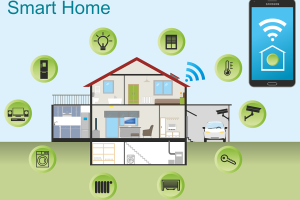Standards hold the key to unlocking the connected home

In light of the current pandemic, global technology market advisory firm ABI Research estimates that Connected Home devices could see a 30% year-on-year sales surge in the coming months. Not only this, says Daniel Egger, Axiros GmbH and Project Stream Lead for Broadband User Services (BUS) Data Modeling Project Stream, smart home devices are expected to overtake smartphones by 2021, with the number of Internet of Things (IoT) devices predicted to reach more than 50 billion devices, according to Strategy analytics.
In order to monetise this golden opportunity within the Connected Home market, service providers must first unlock a truly interoperable ecosystem for user services that vastly improves the consumer experience.
A challenging task for service providers
As smart devices become increasingly prevalent throughout the home and office, consumers and businesses alike are in turn demanding faster, more reliable connectivity. To truly enable and enhance end-users’ connected experience, ubiquitous connectivity must be delivered to all corners of residential and commercial premises, all whilst ensuring connected devices can be seamlessly managed.
How these devices can be managed, monitored, and upgraded can be a challenging task for service providers. And with consumers turning to their broadband service providers for customer support on smart home device-related issues, it further increases complexity and heightens security related problems.
As a result, service providers are being held responsible for poor device and application performance by their customers because they perceive the integration of devices, applications, and internet service as part of their overall broadband experience. This comes down to the fact that consumers often do not have the knowledge to differentiate between “the Wi-Fi” and “the internet”, despite the reality that many consumers buy their Wi-Fi equipment independently of their service provider.
The connected key
Bringing both benefits and challenges, service providers must evolve how the broadband experience is measured and delivered both in the home and for business. This is critical if service providers are to unleash the full potential of the Connected Home ecosystem, and with more than one billion installations worldwide, TR-069 is largely responsible for creating the mass market that stimulated broadband innovation and subscriber adoption.
The evolution of TR-069 and built by vendors and service providers within Broadband Forum, TR-369, also known as User Services Platform (USP), is the protocol for remote IP network CPE management. With the natural extension of the access network, USP is viewed as the intersection between the proliferating Internet of Things (IoT) and can unlock new use cases for the customer. Addressing interoperability and balancing the needs of the consumer and service provider, USP provides a unified approach to deploying, managing and controlling connected devices in the home.
Evolving requirements
With the design of USP, there are several new ways of establishing multiple connections to different Endpoints. One major evolution to the standards and Endpoint IDs is that every participant in USP has a unique identifier. Operators have the ability to use these IDs in very different ways and allow an Agent such as a games console, Wi-Fi connection or streaming service to talk to different Controllers such as a handheld device or a computer and know exactly which Controller requires which data.
Operators’ ability to place the to/from Endpoint IDs becomes a key element of any Records (which are the low-level packets sent between USP participants) for routing. USP also provides the ability to address multiple Controllers and more can be added via discovery mechanisms, so multiple Controllers can be easily installed and communicated with simultaneously. This is alongside a dedicated configuration per Controller and commands which allows Controller specific targeting.
Presenting a choice of Message Transfer Protocols (MTPs), operators can choose the best possible connectivity for Controllers and re-use the existing infrastructure. Operators can have different MTPs for different Controllers and configure them how they see fit, allowing each Controller to communicate in the most efficient way. It also enables Controller Trust which define access controls for each Controller and restricts the abilities the Controller has on the data model.
Greater security
As the number of data from new applications and services continues to grow, so too does the number of security threats and potential issues for the end-user, which didn’t exist previously.
That is why it is critical that service providers think ahead and deploy solutions that meet the criteria for being future-proof from malicious hackers looking to take control of the device. But no matter the challenges that service providers face, such as reducing costs, improving customer support, or differentiating themselves with a unique label to consumers – USP was also designed specifically as the saviour in providing a platform for mastering the Connected Home.
Superior experience

Daniel Egger
When it comes to the golden ticket of generating additional revenue streams, USP allows for the roll-out and implementation of new applications much more easily without affecting existing installations. USP is incredibly important in the mass deployment of broadband networks and are vital in creating a stable ecosystem for Connected Home implementations at scale. This, in turn, will enable service providers to unleash the full potential of the smart home, providing them with the means to offer a superior Connected Home experience, as well as monetise on the smart home ecosystem.
For more and to view videos about Broadband Forum’s views on the Connected Home and the role of USP, go to:
The author is Daniel Egger, Axiros GmbH and Project Stream lead for Broadband User Services (BUS) Data Modeling Project Stream.
Comment on this article below or via Twitter @IoTGN
